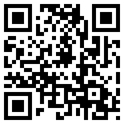| Many years ago I was into astronomy. Over the past couple of years I've got back into it. This is a hobby that can take a lot of your time but the rewards are awesome. I've caught a couple of things on video that could be considered UFO'ish, lol. Those captures are exciting when they happen. A couple of weeks ago I caught the SpaceX Dragon resupply ship for the ISS as it whizzed by the moon. That was pretty neat. One night I was recording and in 3 seconds after I stopped capture video the international space station flew by my field of view while I was pointing at the moon and I missed getting it on video. I was like, AH! I can't believe I just missed that! What a bad feeling. I use two different telescopes. One of my scopes can be operated using a APP on my iPad or phone. Both of the telescope's mounts can track objects via a computer hand controller. One of my scopes will automatically align itself to the stars in the sky via an accessory called a Star Sense. You don't have to do anything. Just turn it on and select an alignment method and it orients itself to the sky in under two minutes. Pretty neat :) Capturing the images is not just as simple as snapping a picture. Most of the images are captured via what's called an imager. It's a video camera made for a telescope. My first imager was one I made myself. I made it out of two Sony DSC-HX20V cameras that use a Sony EXMOR "R" image sensor. I gutted the optic housing of one camera so there could be a straight shot from the telescope to the image sensor. Then I mounted a second optical housing on the camera to fool it into thinking everything was still normal because the optic housing has electronics that if disconnected will cause an error and the camera won't work. Don't ask me how I did it, lol. One night I was just thinking about it and came up with the idea. I already had one of these cameras so I knew how good it was. A good quality imager which I have now, uses a similar type of Sony EXMOR sensor that these cameras use. I searched Ebay and found two of the same cameras. One had a broken screen and the other had a broken housing. I paid $25 each. New they are like 350. So now that I had the cameras I started my project. It worked out greater than I imagined and it can take some lunar pictures that look better than the high quality imager I bought. The reason is that the camera uses an EXMOR "R" sensor which has a higher degree of resolution due to a smaller pixel arrangement. As I was saying before, creating the pictures isn't as easy as just snapping a picture. I use four different software to create a final image. It's the common way astrophotographers do it. You first capture the object in video using an imager and a capture software. For that I use either FireCapture or SharpCapture. After you video the object you load the video into another software that has many configuration options that you have to play with to learn how to get the best result. That software is called PIPP. It saves only the best frames from the video per your configuration selections and creates a new smaller video. Then you load that video into another software that again, you configure for the best frames. The software is called Autostakkert. This software also does what is called stacking. Per your configuration, the software uses only the best frames. After you run the analyze routine it displays a frame of the video. In that window of the software you add alignment points. Little red dots. You can do it manually but I usually use the auto add APs and select a 25 pixel radius. This puts anywhere between 7 and 10 thousand alignment points in the frame. When you run the software it aligns each frame of the video on top of each other only keeping the best data frames and kicks out the rest. When done it saves the video into a raw image format. After that's done you then load the raw image into another software called Registax. This software can do stacking too but everyone uses it for a function it has called wavelets. This software layers the raw image into 6 different layers. Each layer can be tweaked in detail, sharpness, smoothing and a multitude of other settings. Once you're satisfied with that image you save it to a standard format like a jpeg. Then you take that image and load it into Photoshop. From there you just make minor adjustments to things like contrast and light levels and maybe add a click of sharpness and you usually need to crop the image because of distortions that are created around the outside of the image during processing. Here are some links and video. Thanks for reading. Astro images.
[ http://www.maximusdvd.com/other/Solar2/index.htm ] Homebrew imager.
[ http://www.maximusdvd.com/other/Homebrew-Imager/index.htm ] Homebrew imager on/off video.
[ http://www.maximusdvd.com/other/Homebrew-Imager/homebrew-imager.mp4 ] Moon crater Capernicus.
 Jupiter and three of it's moons.
 Homebrew imager.
 Homebrew imager attached to the telescope and connected to a monitor via its mini HDMI output.

 www.mytwinturbo.com Nissan Data Voice - The first Nissan diagnostic software with a voice!
 Nissan Data Voice on YouTube Download my Nissan 300ZX Vin/Model Lookup. |

